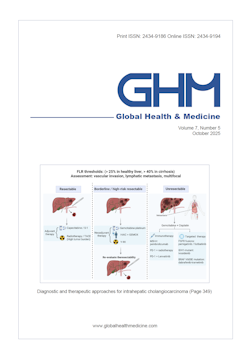Global Health & Medicine 2021;3(6):365-370.
Endoscopic resection for gastrointestinal tumors (esophageal, gastric, colorectal tumors): Japanese standard and future prospects
Yanai Y, Yokoi C, Watanabe K, Akazawa N, Akiyama J
Endoscopic resection (ER) techniques such as polypectomy, endoscopic mucosal resection (EMR) and endoscopic submucosal dissection (ESD) are widely accepted as a less invasive treatment for gastrointestinal (GI) tumors. Since there is a limit to the size that can be resected by EMR and it is often divided, it is not possible to accurately evaluate the degree of cancer progression, and the cancer remains or causes recurrence. ESD is a technology that overcomes these weaknesses. ER techniques are considered for tumors that have a very low possibility of lymph node metastasis and are suitable for en-bloc resection. As ESD became more widespread, the difficulty of treating ESD was gradually resolved by the development of technology and equipment, the curative resection rate increased, and the complication rate decreased. ER techniques have become the standard treatment for early cancer and precancerous lesions in Japan, and the therapeutic indications are expanding day by day. The indications for whether endoscopic treatment can be performed are defined by the guidelines for each organ such as the esophagus, stomach, and colorectum. In the coming aging society, it is also necessary to evaluate the indications for endoscopic treatment and invasive treatment. In addition, recent advances in endoscopic technology are making it possible to remove submucosal tumors that previously required surgery. In this review, we summarize the recent Japanese standard indications of ER for each GI location and future prospects of ER.
DOI: 10.35772/ghm.2020.01116







